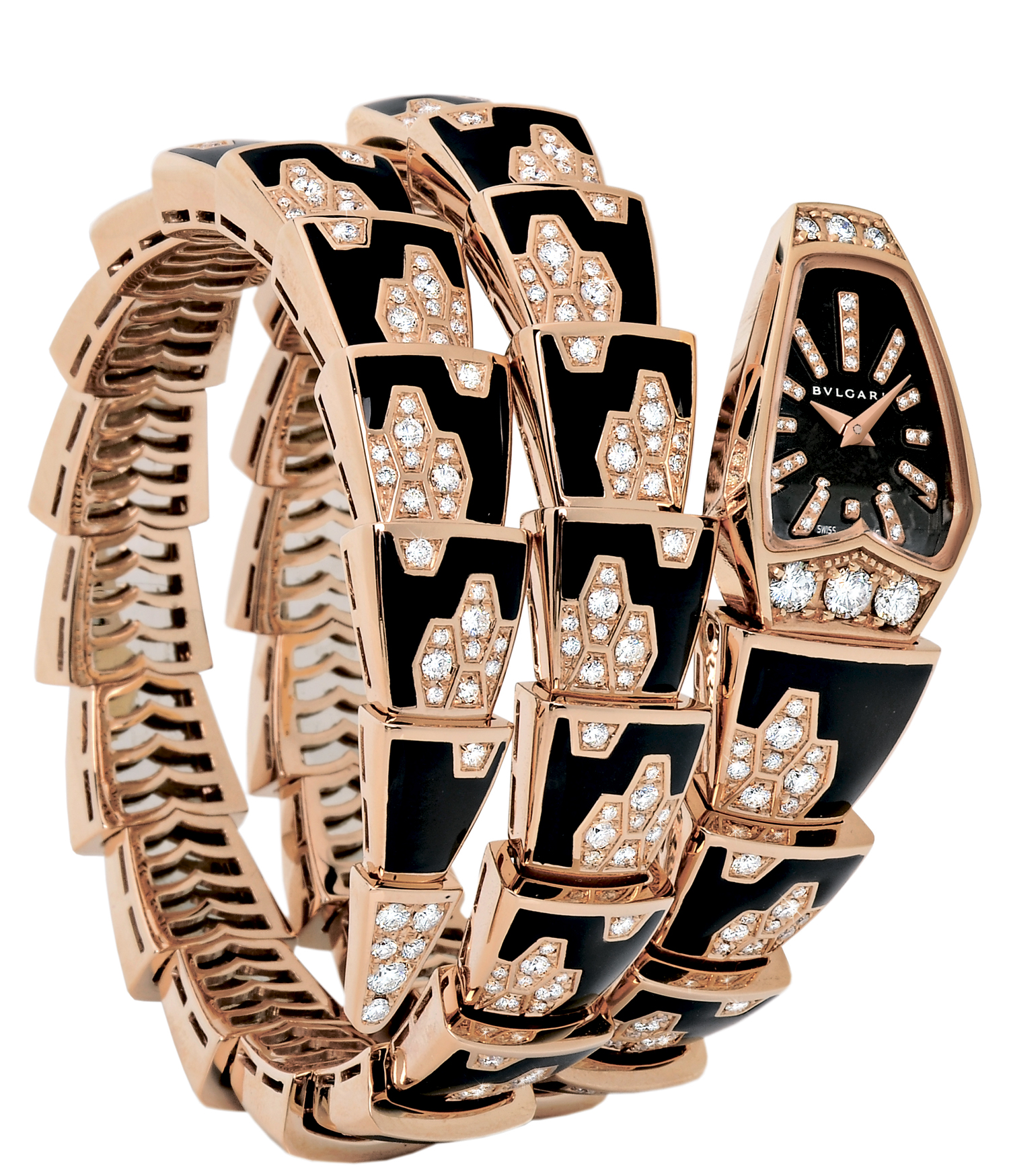 |
| A Bulgari Serpenti watch (at stylecurated.blogspot.ca) |
I am revealing my ignorance around jewelry in saying I became familiar with the Serpenti watch for the first time yesterday, when the heavyweight glossy magazine ‘Style & Fashion’ fell out of our neighbour’s Sunday Star newspaper. At $88,000 for this version of the ornate gold and diamond ‘snake’ watch I saw in the magazine (not the image above) I wasn’t really in the marketplace.
But the sight of the BVLGARI name, with its Latin ‘V’ for
‘U’, caught my attention. It is more
usual for me to see the brand while weaving through duty free malls in airports
(these days, you can’t seem to get from security clearance to your departure
gate without this steeplechase). Each
time I see it I think about something I read a number of years ago; the addition
of two members of this family of jewelers to the List of the Righteous Among Nations, a Jewish recognition process for those who helped save Jews in in
peril during the Holocaust. Yad
Vashem, the Holocaust Martyrs' and Heroes' Remembrance Authority in Jerusalem,
compiles and maintains this list of now around 24,000 names.
Costantino Bulgari and his wife Laura lived in Rome in 1943 and
one day took off the street three complete strangers who knocked at their door and
then hid them; three women who otherwise would probably have disappeared into a
concentration camp after the raids on the Jewish Ghetto in Rome.
The List of the Righteous contains many stories of
courageous acts on small and large scale. Some are well-known – those of Raoul
Wallenberg, Irene Sendler, Oskar Schindler to name but three. Most of the thousands now listed are known
only to those who either study World War II or Holocaust history, or those who have
family histories that include these acts of humanity.
Primo Levi, a survivor of Auschwitz, wrote about the Italian
bricklayer Lorenzo Perrone who worked on the building expansion program for
that concentration camp. Peronne
provided the supply of extra food and warmer clothing that kept Levi alive. Levi
incorporated elements of his benefactor’s name into those of his children and
wrote about him in If This Is a Man,
his account of his own Auschwitz experience.
In the List are a group of twenty-two Danes who worked in the
underground resistance. They would only agree to be recognized as a group; as
if by doing so they made this act more general to people and less specific to
individuals.
From
bricklayer to wealthy jeweler, the acts of humanity recorded in the List cross
economic, social, racial and religious divisions. As a fashion magazine flops open on a table or
a sign in an airport shopping mall catches my eye, I am content to remain ignorant
about exotic high-end jewelry but be reminded again of these acts of courage.
No comments:
Post a Comment